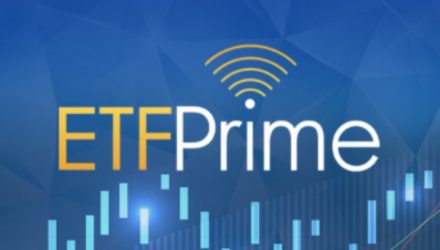On this episode of ETF Prime, VettaFi’s Lara Crigger discussed two of the biggest ETF trends in 2023 with host Nate Geraci. Michael Natale of Northern Trust was on later to talk about the macro outlook for equities and bonds, and Teucrium’s Sal Gilbertie closed with a discussion of the firm’s most recently launched ETF and more.
ETF Trends: Tech Takes Center Stage in 2023
It’s no surprise that given the tech rally this year, funds like the Technology Select Sector SPDR Fund (XLK) and Vanguard Information Technology ETF (VGT) are up more than 37% YTD. That said, both ETFs experienced significant outflows this year. Geraci noted that it’s a trend that holds true for other, more targeted mainstream tech ETFs as well.
“A lot of this performance that we’re seeing in 2023, in XLK, in VGT and others, is… just a rebound,” Lara Crigger, editor-in-chief at VettaFi explained. Tech ETFs continue to recover after a pummeling for much of 2022, though they haven’t reached their January 2022 levels yet.
On the reverse side, several technology-focused ETFs continue to garner inflows this year, such as the Invesco Nasdaq 100 ETF (QQQM). Crigger posits this might be due to investors tax-loss harvesting out of larger or more expensive tech ETFs. It could also be repositioning with better options within the Nasdaq-100 for individual portfolios.
Within tech, investors continue to flock to targeted exposures like semiconductors this year. The VanEck Semiconductor ETF (SMH) has YTD net flows of $256 million, as do several other semiconductor ETFs.
“That has to be tied into artificial intelligence and this sort of explosion of interest we’ve seen around anything AI,” said Crigger.
ETF Trends: The Rise of Covered Call ETFs
Geraci also highlighted the meteoric rise of the JPMorgan Equity Premium Income ETF (JEPI) that brought in $26 billion in the last three years. The fund took off in 2021 when much of the country began emerging from COVID-lockdowns post-vaccine release. As inflation signals rose, the market become more “jostled”, according to Crigger. Add in interest rate hikes and the changing global macro environment, and it proved challenging for portfolios.
“It gets harder for what was providing you income to continue providing you income,” said Crigger. Given the challenges to bonds in 2022, equities became the logical choice for investors to seek income. “JEPI was the standout star out of that field; the yield was double digits.”
In the wake of its success, a number of other covered call income ETFs have come to market. Crigger registered surprise at the seemingly unending appetite for covered call ETFs recently. Research on the VettaFi platform into long-established covered call ETFs like the Global X Nasdaq 100 Covered Call ETF (QYLD) and the Amplify CWP Enhanced Dividend Income ETF (DIVO) rose this year alongside other covered call funds.
Equity and Fixed Income Positioning in Current Markets
Michael Natele, head of intermediary distribution at Northern Trust, appeared next to discuss the firm’s outlook for stocks and bonds. Northern Trust offers the FlexShares lineup of ETFs that includes the FlexShares Morningstar Global Upstream Natural Resources Index Fund (GUNR) and the FlexShares High Yield Value-Scored US Bond Index Fund (HYGV).
Northern Trust utilizes two approaches to determine portfolio construction. One is a strategic view comprised of a traditional 60/40 portfolio that looks five years out. That is then compared with a tactical view that forecasts one year out.
“Right now we are underweight all segments of equities across the world,” explained Natale. This includes developed markets (both ex-U.S. and U.S. inclusive), and emerging markets. “It’s slight, just a few percentage points each, but that’s pretty significant when you look to where we’ve come from in the last decade.”
Within bonds, Natale expressed a need for caution given the last year. Northern Trust currently prefers credit risk compared to term risk, though that could change if the Fed pauses rate hikes. “We also feel like the 10-year Treasury is at the higher end of the range that we expect it to be in.” If that holds true, the firm is more likely to consider taking on a level of duration risk. Natale also explained the potential for barbell strategies that invest in short duration and high yield in the current environment.
Teucrium’s Take on Commodities
Last on was Sal Gilbertie, Teucrium founder, to talk their ETFs. The firm recently launched the AiLA Long-Short Base Metals Strategy ETF (OAIB) which leverages the rise of AI. It’s an aptly timed fund, given the enormous investing popularity of AI and related categories this year.
OAIB’s indexes are created by AiLA Indeces, a firm from Singapore comprised of “data scientists and commodity market veterans,” Gilbertie explained. “When I look at the AiLA B Index [a base metals index], it’s got an annualized return 2018-2022 over 15% with a Sharpe ratio just under two percent.”
The fund employs a long/short strategy that can potentially offer returns no matter which direction markets move. It’s the same type of strategy that the Teucrium AiLA Long-Short Agriculture Strategy ETF (OAIA) also utilizes. Agriculture is a sometimes-overlooked commodity, according to Gilbertie. Most investors instinctively turn to gold for its store of value or energy for its familiarity. Agricultural commodities are worth inclusion as well, for fundamental reasons.
“The last thing that people will do is let themselves, their family, or their animals go cold or hungry,” Gilbertie said. “You can’t live without food; ags are everything. So, if you’re going to have important things in your portfolio, you probably want to consider ags too.”
Listen to the entire episode of ETF Prime Featuring Lara Crigger:
For more ETF Prime podcast episodes, visit our ETF Prime channel.

